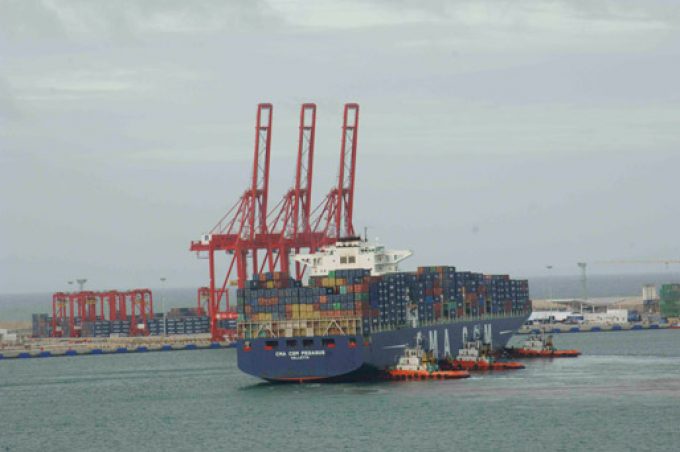Threat of rising oil price adds to frustration for crisis-hit supply chain chiefs
New warnings from the World Bank of surging oil prices, adding to the continuing instability ...

Sri Lanka’s Colombo port seems to have had a “bumper volume harvest” from the Red Sea crisis, after vessel operators frantically adjusted port calls to minimise schedule disruptions from the longer transits around southern Africa.
Colombo is a busy intermediate point for container transhipment in South Asia, predominantly for Indian cargo.
“Colombo has been a great beneficiary of the transhipment flow realignment in West Asia,” a Colombo-based port veteran told The Loadstar.
And the gains are clearly reflected in new throughput data. Combined container volumes at Colombo climbed 33% year on year last month, with mainstay transhipment up 29%.
According to the source, the detour via the Cape of Good Hope meant mainline carriers on trades to North Europe and the Mediterranean suspended direct calls to Middle East ports, including King Abdullah in Saudi Arabia and Salalah in Oman.
“A lot of this Gulf-Med trade has been moving in and out of Colombo, following the Red Sea disruption” the official noted. “The advantage is that vessels can sail straight from Colombo to North Europe or Mediterranean.”
The fact that Colombo is in close proximity to the east-west shipping route makes the altered flow a convincing value proposition for carrier managers. MSC and CMA CGM are, especially, connecting a good chunk of their Gulf cargo via Colombo by using feeder options, local industry sources noted.
A recent MSC customer advisory announcing network changes explained: “Redirecting all vessels via the Cape has impacted global shipping networks. Therefore, MSC is adapting its east-west routes to manage this disruption,” said the Geneva-based liner.
A flurry of intra-Gulf feeder or shuttle services launched in recent weeks has been another antidote to the supply chain crisis.
A Maersk Sri Lanka operations executive noted that the recent lifting of Sri Lanka’s ban on certain imports was also being felt in volume consolidation at Colombo. The ban was a consequence of the subcontinent nation’s political and economic turmoil in 2022.
Amid the gains being reported, Colombo has underlying capacity problems to further sweeten the cargo pot, as it is already operating at over 90% utilisation. The port handled 6.9m teu in 2023 and expects to handle over 7m teu this year.
Adani Group’s upcoming Colombo West International Terminal (CWIT), with phase 1 targeted for an early-2025 opening, is expected to provide near-term capacity relief.
In response to the Red Sea crisis, Maersk has also widely rejigged its Gulf networks. One notable service development was the launch of a shuttle loop connecting Saudi Arabia to the Mediterranean. The full port rotation is Jeddah, King Abdullah, Port Said, Barcelona, Port Tangiers, Algeciras, Genoa and Port Said.
The writer can be contacted at [email protected]
Comment on this article